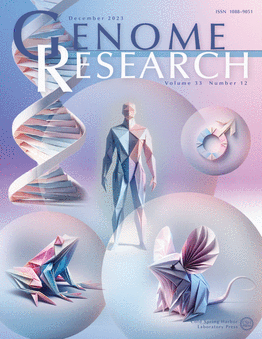Analytical validation of germline small variant detection using long-read HiFi genome sequencing
IF 6.2
2区 生物学
Q1 BIOCHEMISTRY & MOLECULAR BIOLOGY
引用次数: 0
Abstract
Long-read sequencing has the capacity to interrogate difficult genomic regions and phase variants; however, short-read sequencing is more commonly implemented for clinical testing. Given the advances in long-read HiFi sequencing chemistry and variant calling, we analytically validated this technology for small variant detection (single nucleotide variants, insertions/deletions; SNVs/indels; <50bp). HiFi genome sequencing was performed on DNA from reference materials and clinical specimen types, and accuracy results were compared to short-read genome sequencing data. HiFi genome sequencing recall and precision across Genome in a Bottle (GIAB)-defined nondifficult and difficult genomic regions (high confidence) for SNVs were >99.9% and >99.7%, respectively, and for indels were >99.8% and >99.1%, respectively. Moreover, HiFi genome sequencing outperformed short-read genome sequencing on overall SNV/indel F1-score accuracy at all paired sequencing depths, which were further stratified across 100 total GIAB-defined genomic regions for a comprehensive evaluation of performance. Of note, HiFi genome sequencing F1-scores for SNVs and indels surpassed 99% at ~15×. and ~25×, respectively. In addition, high confidence small variant concordance across all HiFi genome sequencing reproducibility assessments (two specimens, three independent sequencing datasets) were >99.8% for SNVs and >98.6% for indels, and average high confidence small variant concordance between paired blood, saliva, and swab specimens were all >99.8%. Taken together, these data underscore that long-read HiFi genome sequencing detection of SNVs and indels is very accurate and robust, which supports the implementation of this technology for clinical diagnostic testing.求助全文
约1分钟内获得全文
求助全文
来源期刊

Genome research
生物-生化与分子生物学
CiteScore
12.40
自引率
1.40%
发文量
140
审稿时长
6 months
期刊介绍:
Launched in 1995, Genome Research is an international, continuously published, peer-reviewed journal that focuses on research that provides novel insights into the genome biology of all organisms, including advances in genomic medicine.
Among the topics considered by the journal are genome structure and function, comparative genomics, molecular evolution, genome-scale quantitative and population genetics, proteomics, epigenomics, and systems biology. The journal also features exciting gene discoveries and reports of cutting-edge computational biology and high-throughput methodologies.
New data in these areas are published as research papers, or methods and resource reports that provide novel information on technologies or tools that will be of interest to a broad readership. Complete data sets are presented electronically on the journal''s web site where appropriate. The journal also provides Reviews, Perspectives, and Insight/Outlook articles, which present commentary on the latest advances published both here and elsewhere, placing such progress in its broader biological context.
 求助内容:
求助内容: 应助结果提醒方式:
应助结果提醒方式:


